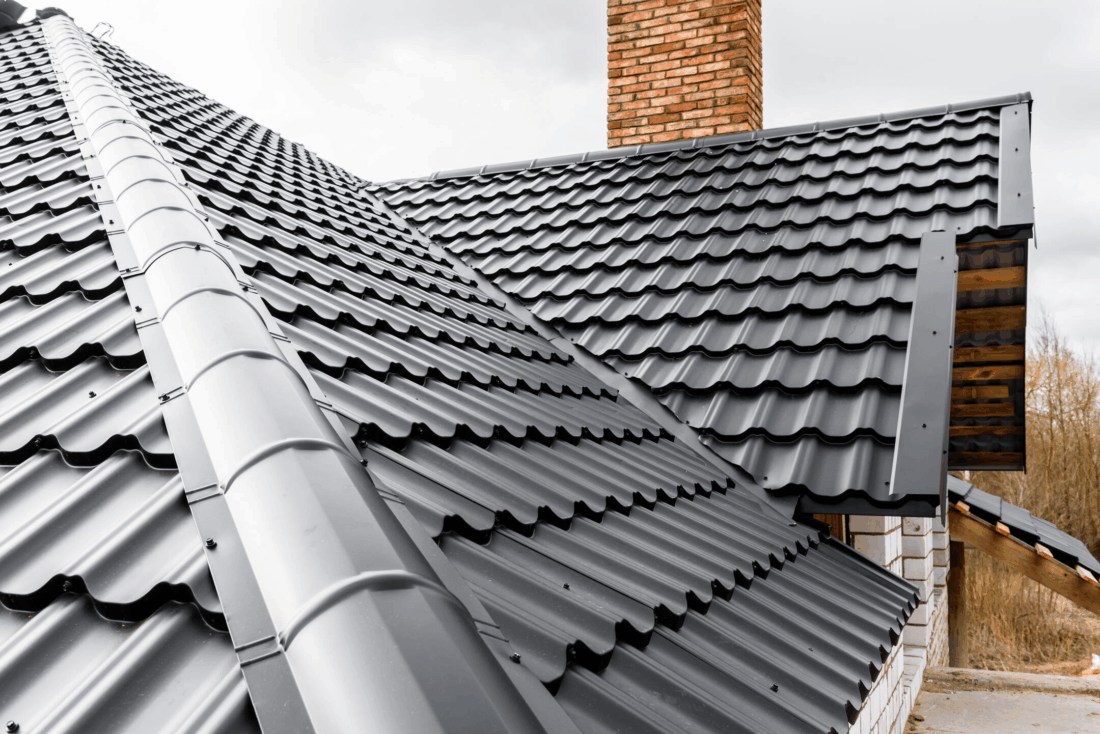When most homeowners think about energy efficiency, they imagine new windows, updated HVAC systems, or better insulation. But one of the biggest influences on your home’s energy performance is often right above your head—the roof.

Your roof acts as a barrier between your living space and the outside world. If it’s in top shape, it can help regulate indoor temperatures, reduce your utility bills, and lessen the strain on your heating and cooling systems. If it’s compromised, even slightly, your entire home becomes less efficient.
Understanding how your roof affects energy use throughout the year can help you spot issues early and invest wisely in long-term improvements.
Winter: Heat Loss Through the Roof
In colder months, heat naturally rises—and without a well-sealed roof system, a significant amount of warmth can escape through the attic or upper floors.
Key energy issues during winter:
- Inadequate insulation in the attic or under the roof deck
- Air leaks around vents, chimneys, and skylights
- Ice dam formation that traps melting snow and causes water intrusion
- Drafts caused by broken or shifting shingles
If your heating bills spike during cold weather or you notice uneven temperatures between levels of your home, it might be time to have a roofing company inspect for leaks, air gaps, or signs of moisture damage.
Proactive roof repair, such as sealing flashing or upgrading attic insulation, can dramatically improve winter comfort while extending the life of your roof.
Spring: A Season of Transitions
Spring brings fluctuating temperatures and unpredictable rainfall. It’s also a critical time to evaluate how your roof fared through winter—and prepare for the heat ahead.
Spring efficiency checks:
- Inspect for storm or frost-related roof damage
- Clean gutters to prevent blockages that affect water drainage
- Ensure attic ventilation is intact to support airflow
Proper ventilation keeps your attic from overheating on warmer days, helping to maintain indoor comfort without overworking your AC system. If you’re considering roof replacement, spring is often an ideal time to get ahead of summer demand and ensure your home is ready for hotter months.
Summer: Reflect or Absorb?
In summer, your roof becomes a solar battleground. It either reflects heat away or absorbs and transfers it into your home.
Signs of summer inefficiency:
- Attic feels excessively hot or humid
- Cooling system runs longer than expected
- Upper floors are significantly warmer than lower ones
- Shingle surface is cracked, blistered, or showing signs of UV wear
Modern roofing materials are designed with thermal performance in mind. Light-colored or reflective roofing products can deflect sunlight, reducing heat transfer. In some cases, a roof upgrade may qualify for energy efficiency tax incentives.
Local roofing companies, including teams like D&G Exteriors, often advise homeowners on material selection based on regional sun exposure, orientation, and home layout.
Fall: Preparation Season
Fall is a transitional season that gives homeowners a valuable window to prepare for harsher weather. It’s also a good time to identify lingering inefficiencies that can cause comfort issues in winter.
Smart fall actions:
- Check for signs of roof sagging or ventilation blockages
- Schedule roof repair before colder weather makes work difficult
- Examine flashing around vents and chimneys to prevent heat loss
If you’ve also been working with a deck builder to enhance your outdoor space, fall is a good time to coordinate any necessary flashing or structural tie-ins where the deck roof meets the house.
Fall is also ideal for evaluating whether attic insulation is doing its job—because energy efficiency isn’t just about the roof surface; it’s about the system working as a whole.
Other Factors That Impact Energy Performance
A roof isn’t just one layer—it’s a multi-part system. When even one piece underperforms, the result is higher energy costs and reduced comfort.
Here’s how each part contributes:
1. Roof Color & Material
- Dark shingles absorb more heat; lighter colors reflect it.
- Metal roofing and composite materials often offer better thermal reflection than asphalt.
2. Underlayment and Decking
- Acts as a thermal and moisture barrier.
- Damaged or thin materials can compromise insulation layers.
3. Insulation
- Especially critical in the attic space.
- Prevents heated or cooled air from escaping through the roof.
4. Ventilation
- Allows warm air to escape in summer and prevents condensation in winter.
- A lack of airflow leads to mold, moisture damage, and higher energy use.
An experienced roofing company can evaluate each of these components during a routine inspection and recommend upgrades that contribute to year-round efficiency.
When to Consider Roof Replacement for Energy Gains
Sometimes, repairs aren’t enough to bring your roof up to modern energy performance standards. Here are signs it might be time for a full roof replacement:
- Your roof is over 20 years old and has visible wear
- You notice persistent insulation or ventilation problems
- Energy bills remain high despite efforts to seal or insulate
- The roof has multiple layers that trap heat and moisture
- Material degradation (cracking, blistering) is widespread
Replacing your roof with energy-efficient materials not only reduces heating and cooling costs but can increase resale value and reduce maintenance needs in the long term.
Final Thought: Your Roof Is a Thermal Shield
Energy efficiency doesn’t start with your thermostat—it starts at the top. A healthy, high-performing roof helps regulate temperature, reduce strain on your HVAC systems, and protect your home’s interior from seasonal extremes.
It pays—literally and figuratively—to view your roof as part of a larger energy-saving ecosystem. Whether you need minor roof repair, improved attic ventilation, or are considering a full roof replacement, making informed choices now will benefit you in every season to come.
Homeowners who work with professionals like D&G Exteriors gain the added advantage of localized expertise—ensuring every part of their roofing system supports comfort, sustainability, and value.


